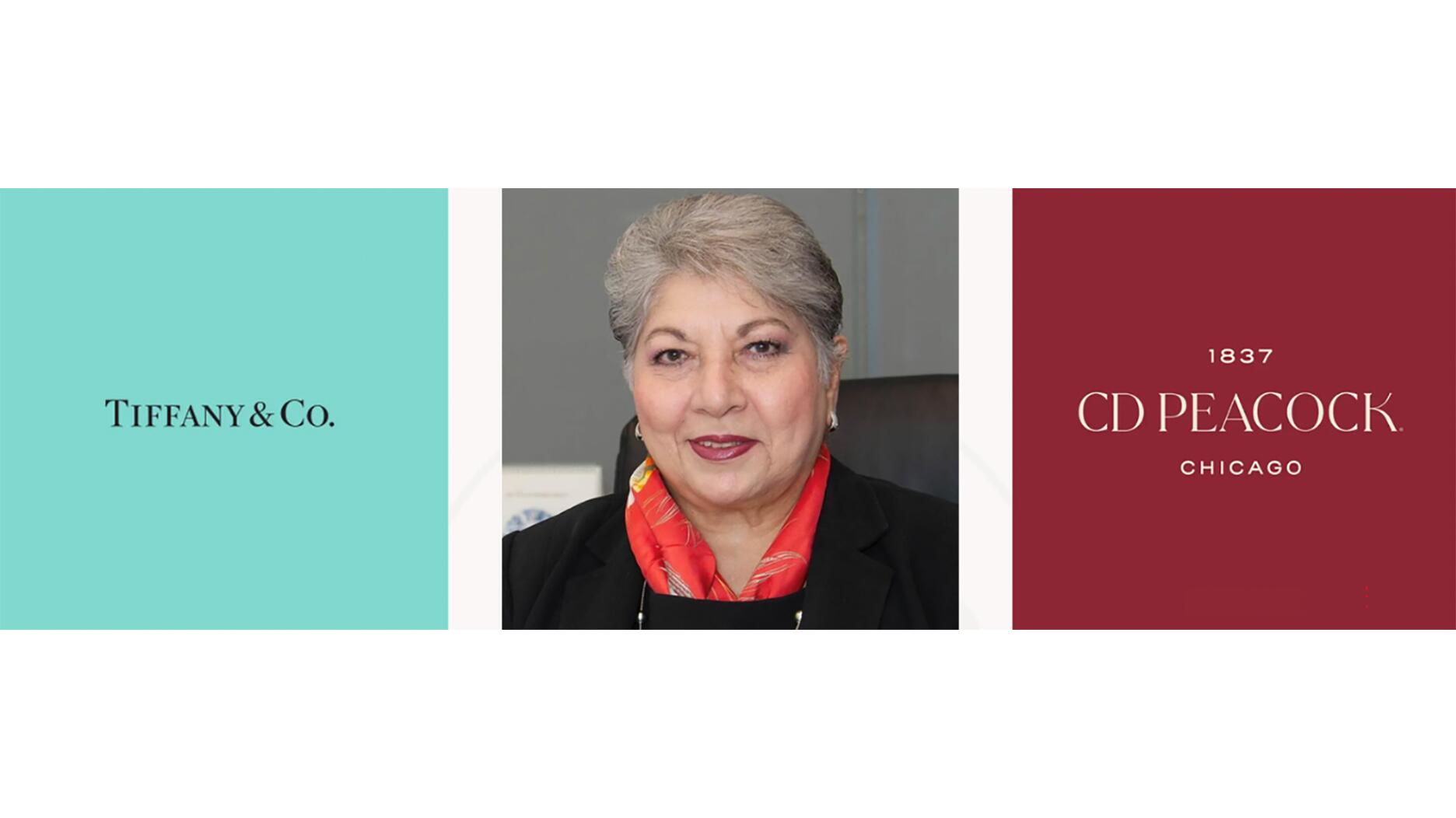It purchased the “Grosse Pièce,” an ultra-complicated Audemars Piguet pocket watch from the ‘20s, for a record-breaking price at Sotheby’s.
6 Takeaways from a Rare Chat with David and Sybil Yurman
The pair stepped into the spotlight during the recent JCK Tucson show, sharing many pieces of advice for designers on building their business.

Tucson, Ariz.--David and Sybil Yurman of the eponymous brand known for its cable motif stepped into a seldom seen spotlight on Thursday.
On a shady oversized patio at the JW Marriott Starr Pass Resort & Spa in Tucson, Arizona, home of the JCK Tucson show, the pair had a packed house of invitation-only guests eager to hear the legends talk about the evolution of the brand and staying timely in the current retail landscape.
The pair met more than 50 years ago as emerging artists. David, a one-time sculptor, was creating pieces for Sybil when she made a request: a piece of jewelry.
“I told David, ‘The sculptures are beautiful, but I’d like to be able to wear one,’” Sybil recalled.
So he did, and people noticed.
In a gallery on Madison Avenue, a shop owner inquired about purchasing Sybil’s gift from David—a necklace with human figures that culminated in a clasp of interlocking hands. David balked at the idea of selling it, but with some persuasion from Sybil, agreed to part with it.
Within 20 minutes, the pair received another call from the owner with her own request—for him to make more, and quickly. They had already sold four.
At once, the couple understood margins, knowing they needed to increase them. “If you sell too many too fast then your margin is too low,” David said.
So with that emerging business savvy and a $500 loan—“for which our parents had to co-sign,” Sybil added—from the Hebrew Free Loan Society, their business was born.
“We didn’t set out to create a business. We just wanted to make things,” she explained.
“If we could do it with $500, you can do it, too,” David said.
Here are a few of the pair’s professional takeaways from the session to help designers carve out a rich career for themselves.
On Name Recognition in Stores in the Early Years
“When we started, everyone was buying jewelry from another country, but our hook was American-made,” David said. “Customers were getting tired of seeing the same thing over and over again, so they embraced the point of view of the craft movement. It was a fight to have a jeweler use your name in a showcase, though. I would say, ‘I made this, so it’s a lie for you to say you did.’ At that time, jewelers didn’t want the customers to know that they could buy from anyone else.”
On the
“I would say ‘We’ll only allow you to take the collection if you buy enough pieces to tell a story, to show our point of view,’” David said.
Sybil added, “We didn’t do it out of arrogance. We had just never done it before, so we didn’t realize how regimented it was. We had to figure out how to do this tricky combination of art and commerce. So we wrote a contract—a retailer agreement—that revolutionized the way business was done. You also had to like the people you were dealing with because you had to believe they would pay you and could help sell your product.”

On Hiring Good Help
“The aesthetic is easy; it’s the whole organizational part of the business that is a fight,” David explained. “Hire people who are like-minded. Hire the people who complement your strengths to fill in the gaps and listen.”
On Familiar Designs
“You need a good merchandiser to remind you what you made two years ago and to decipher demand while keeping true to aesthetic,” David said. “You need someone to say, ‘Take that out of the collection because that was in someone else’s collection’ or ‘By the way, I bought that last year from John Hardy.’
You have to see other people’s lines to know what is out in the world. I go to shows to see the flow of things, but also to see what I don’t want to make. Follow your own way of doing things.”
On Market Need
“I made two belt buckles that sold quickly,” David recollected. “I didn’t want to make anymore, but a friend said, ‘You’re in the market, so you’ve got to take your pigs to market.’ Ask customers what they want, and fill a market need. So many people now think they know everything. No one wants to listen. Listen to your retailers and customers.”
On the Story Behind the Cable
“The inspiration came from brazing rods. I bundled up this material to solder,” David explained. “I said, ‘Let’s do cable. Let’s use that as our river.’ I found a classic form and stuck with it. Today, 70 percent of what we sell is cable, and many of our best-selling designs were made 20 years ago.”
The Latest

Chandler got his start at Michelson Jewelers and has served as DCA president and CEO since 2001. He will retire at the end of the month.

Sponsored by Digital Monitoring Products

How Jewelers of America’s 20 Under 40 are leading to ensure a brighter future for the jewelry industry.

The boutique is slated to open this week inside Terminal 8, offering pre-owned Rolex watches and more to international travelers.


The lab-grown diamond grower now offers custom engagement and fashion jewelry through its Kira Custom Lab Jewelry service.

The special-edition egg pendant ingested in a New Zealand jewelry store was recovered after a six-day wait.

Roseco’s 704-page catalog showcases new lab-grown diamonds, findings, tools & more—available in print or interactive digital editions.

Associate Editor Natalie Francisco plays favorites with Piece of the Week, selecting a standout piece of jewelry from each month of 2025.

The “Love and Desire” campaign is inspired by the magic that follows when one’s heart leads the way, said the brand.

Two awardees will receive free tuition for an educational course at the Swiss lab, with flights and lodging included.

Berta de Pablos-Barbier will replace Alexander Lacik at the start of January, two months earlier than expected.

Sotheby’s held its first two jewelry sales at the Breuer building last week, and they totaled nearly $44 million.

Here are six ideas for making more engaging content for Instagram Reels and TikTok, courtesy of Duvall O’Steen and Jen Cullen Williams.

Carlos Jose Hernandez and Joshua Zuazo were sentenced to life without the possibility of parole in the 2024 murder of Hussein “Sam” Murray.

Yood will serve alongside Eduard Stefanescu, the sustainability manager for C.Hafner, a precious metals refiner in Germany.

The New Orleans jeweler is also hosting pop-up jewelry boutiques in New York City and Dallas.

Set in a Tiffany & Co. necklace, it sold for $4.2 million, the highest price and price per carat paid for a Paraíba tourmaline at auction.

The jeweler’s “Deep Freeze” display showcases its iconic jewelry designs frozen in a vintage icebox.

Take luxury gifting to new heights this holiday season with the jeweler’s showstopping 12-carat sphene ring.

This year's theme is “Unveiling the Depths of the Ocean.”

In its annual report, Pinterest noted an increase in searches for brooches, heirloom jewelry, and ‘80s luxury.

Starting Jan. 1, customers can request the service for opal, peridot, and demantoid garnet.

The 111-year-old retailer celebrated the opening of its new location in Salem, New Hampshire, which is its third store in the state.

The new catalog features its most popular chains as well as new styles.

The filmmaker’s personal F.P. Journe “FFC” prototype was the star of Phillips’ recent record-setting watch auction in New York.

The new location in the Design District pays homage to Miami’s Art Deco heritage and its connection to the ocean.



























